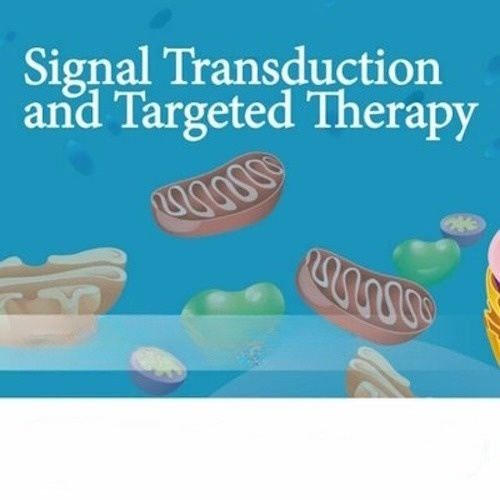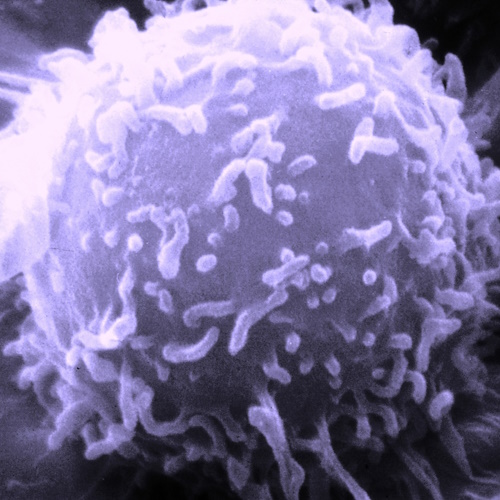Ageing is universal, but its impact on our immune system is particularly profound. Over time, our body’s defence network weakens, leaving us more vulnerable to infections, cancer, autoimmune disorders, and reduced vaccine responses. This gradual decline, known as immunosenescence, was first proposed by Roy Walford in the 1960s. Today, it stands as one of the most important frontiers in ageing research.
At its core, immunosenescence refers to progressive remodelling of both innate and adaptive immunity. The thymus shrinks, naïve T cells decline, chronic inflammation rises (“inflammageing”), and senescent immune cells accumulate. Together, these changes set the stage for age-related diseases such as Alzheimer’s, cancer, cardiovascular disease, diabetes, and chronic infections.
Yet, there is hope. Advances in molecular biology reveal signalling pathways, cellular dysfunctions, and therapeutic targets that could reshape immune ageing. From drugs that inhibit mTOR and NF-κB to lifestyle interventions that boost melatonin and restore gut microbiota, scientists are developing strategies to keep our immune system resilient well into later life.
This article explores how immunosenescence develops, the diseases it drives, and the cutting-edge strategies being tested to reverse it.
The Molecular Orchestra of Immune Ageing
Immunosenescence does not happen randomly—it is orchestrated by a network of signalling pathways. Some become overactivated, fuelling inflammation, while others decline, reducing resilience.
NF-κB: The Master Inflammatory Switch
NF-κB is a transcription factor that turns on genes involved in inflammation. In aged cells, DNA damage and oxidative stress chronically activate NF-κB, driving persistent inflammation, impaired immune surveillance, and reduced T cell diversity.
NF-κB suppresses autophagy, causing build-up of damaged mitochondria.
It prevents clearance of senescent cells by boosting anti-apoptotic proteins.
Persistent activation accelerates cancer risk and inflammageing.
Blocking NF-κB in animal models reduces oxidative stress and delays age-related symptoms—making it a prime therapeutic target.
mTOR: Growth Versus Longevity
The mTOR pathway governs metabolism, protein synthesis, and cell survival. While vital for growth, chronic mTOR activation fuels ageing. In immune cells:
Overactive mTORC1 reduces autophagy, impairing T cell survival.
Inhibiting mTORC1 with drugs like everolimus enhances vaccine responses in elderly humans.
mTORC2 dysregulation impairs T cell receptor signalling and weakens immune memory.
This duality makes mTOR inhibition a leading anti-ageing strategy.
JAK-STAT: The Cytokine Amplifier
Hyperactivation of the JAK-STAT pathway sustains inflammatory cytokines such as IL-6 and IL-23. This fuels the senescence-associated secretory phenotype (SASP), a cocktail of molecules that promotes chronic inflammation.
Mutations in JAK3 impair T and NK cell development.
Excess STAT3 activation suppresses regulatory T cells, disturbing immune tolerance.
Dysregulated JAK-STAT signalling skews blood stem cells toward myeloid cells, weakening adaptive immunity.
Drugs that block JAK kinases are already in clinical use for autoimmune diseases, raising the possibility of applying them against immunosenescence.
cGAS-STING: DNA Damage Alarm Bells
When DNA leaks into the cytoplasm—through stress, mitochondrial dysfunction, or nuclear breakdown—it activates the cGAS-STING pathway. This boosts NF-κB-driven inflammation but paradoxically impairs interferon production in aged immune cells.
The result: chronic inflammation without strong antiviral defence—a dangerous balance in older adults.
AMPK, Melatonin, and Sirtuins: The Declining Guardians
In contrast, several protective pathways decline with age:
AMPK, the energy sensor, normally suppresses inflammation and promotes autophagy. Its reduced activity accelerates immune dysfunction.
Melatonin, the sleep hormone, drops sharply with age. Beyond regulating circadian rhythm, melatonin enhances antioxidant defence, modulates immune cells, and restores T cell function.
Sirtuins, a family of proteins dependent on NAD+, preserve mitochondrial health and suppress NF-κB. With age, NAD+ falls, silencing sirtuins and weakening immune resilience.
Together, these downregulated pathways highlight why restoring balance—not just suppressing overactivity—is essential for therapy.
Cellular Ageing of the Immune Army
The immune system is a complex army of cells, each with its own vulnerabilities to ageing.
Blood Stem Cells: The Root of Decline
Hematopoietic stem cells (HSCs) give rise to all immune cells. In old age:
Their numbers increase, but their regenerative power declines.
They favour myeloid cells (macrophages, monocytes) over lymphoid cells (T and B cells).
Epigenetic changes, reduced autophagy, and replication stress drive dysfunction.
The result is an immune system biased toward inflammation, with reduced adaptive defence.
Myeloid Cells: From Defenders to Inflammatory Triggers
Neutrophils live longer and release excessive inflammatory molecules, worsening tissue damage.
Macrophages become poor at phagocytosis but hyper-secrete cytokines.
Monocytes shift toward pro-inflammatory subtypes, fuelling chronic inflammation.
This contributes to conditions like stroke, lung injury, and metabolic diseases.
T Cells: The Heart of Immunosenescence
T cells suffer most dramatically:
Naïve T cells decline due to thymus shrinkage and impaired IL-7 signalling.
Memory T cells dominate, but their diversity shrinks.
Senescent T cells upregulate checkpoints like PD-1 and LAG-3, entering permanent dysfunction.
Cytotoxic CD8+ T cells lose ability to kill virus-infected or cancer cells.
These changes explain poor vaccine responses, cancer risk, and vulnerability to infections in the elderly.
B Cells: Weakening Antibody Factories
Aged B cells produce fewer, less diverse, and weaker antibodies. Class switching is impaired, and memory declines. This makes flu jabs, COVID-19 vaccines, and other immunisations less effective in seniors.
Natural Killer Cells: Blunted Cancer Surveillance
NK cells, crucial for killing tumours and viruses, become less cytotoxic with age. They express more inhibitory receptors and fewer activating ones, tilting toward a pro-inflammatory state instead of precise killing.
Dendritic Cells: Failing Teachers
As professional antigen-presenting cells, dendritic cells normally “teach” T cells. In ageing, they lose this capacity, reducing adaptive responses and increasing inflammation.
The Microbiome and Sex: Modifiers of Immune Ageing
Two powerful but often overlooked factors influence immunosenescence.
Gut microbiota shifts with age, reducing beneficial bacteria like Bifidobacteria and Faecalibacterium. This reduces short-chain fatty acids that normally suppress inflammation and support regulatory T cells.
Sex differences matter. Women generally retain stronger immunity, with more CD4+ T cells, B cells, and interferon production. Men accumulate more senescent CD8+ T cells. Hormones and genetics (such as X-linked immune genes) shape these differences.
These findings suggest that therapies for immunosenescence may need personalisation based on gut health and biological sex.
Diseases Driven by Immunosenescence
The consequences of immune ageing are far-reaching.
Neurodegenerative Diseases
In Alzheimer’s disease, senescent microglia fail to clear amyloid-beta, while T cells and cytokines penetrate the brain, worsening neuroinflammation. In Parkinson’s disease, immune cells amplify damage caused by misfolded α-synuclein.
Cancer
Senescent immune cells and SASP molecules create a tumour-friendly environment, aiding growth, invasion, and immune evasion. Worse, immunosenescence reduces the effectiveness of immunotherapies like checkpoint inhibitors and CAR-T cells.
Infections
COVID-19 revealed the deadly impact of immunosenescence. Older patients showed dysfunctional T cells, cytokine storms, and poor vaccine responses. Similarly, flu, pneumonia, and CMV hit elderly populations harder.
Autoimmunity
Paradoxically, ageing can also fuel autoimmunity. Senescent T cells lose tolerance, contributing to diseases like rheumatoid arthritis.
Cardiovascular, Metabolic, and Eye Diseases
Atherosclerosis is worsened by inflammatory senescent T cells.
Type 2 diabetes features senescent immune cells promoting systemic inflammation.
Age-related macular degeneration (AMD) stems partly from immune dysregulation in the retina.
Therapeutic Strategies: Fighting Back Against Immune Ageing
Pharmacological Approaches
mTOR inhibitors (rapamycin, everolimus) improve vaccine responses and reduce infections.
JAK inhibitors can reduce chronic inflammation.
Senolytics (like dasatinib + quercetin) selectively clear senescent cells.
NAD+ boosters restore sirtuin activity and mitochondrial health.
Immunomodulation
Rejuvenating the thymus through growth factors or stem cell therapies.
Engineering T cells or NK cells to bypass senescence for cancer therapy.
Modulating dendritic cell function to improve vaccines.
Nutritional and Lifestyle Interventions
Melatonin supplementation restores circadian and immune balance.
Caloric restriction and exercise activate AMPK and suppress NF-κB.
Probiotics and dietary fibre reshape gut microbiota.
Clinical Trials and Future Outlook
Several interventions are already in human trials, including mTOR inhibitors for infections, senolytics for age-related disease, and microbiome therapies.
Conclusion
Immunosenescence is not merely a side effect of ageing—it is a central driver of many age-related diseases. From weakened vaccines to cancer resistance, its fingerprints are everywhere. Yet, research reveals a roadmap: targeting signalling pathways, rejuvenating immune cells, and restoring balance with lifestyle, drugs, and biological therapies.
The dream is not immortality but healthy longevity—an immune system that protects, surveils, and repairs well into our later decades. By understanding immunosenescence at molecular, cellular, and systemic levels, science is moving closer to interventions that extend not just lifespan but healthspan.
The study is published in the journal Signal Transduction and Targeted Therapy. It was led by researchers from Huazhong University of Science and Technology.





